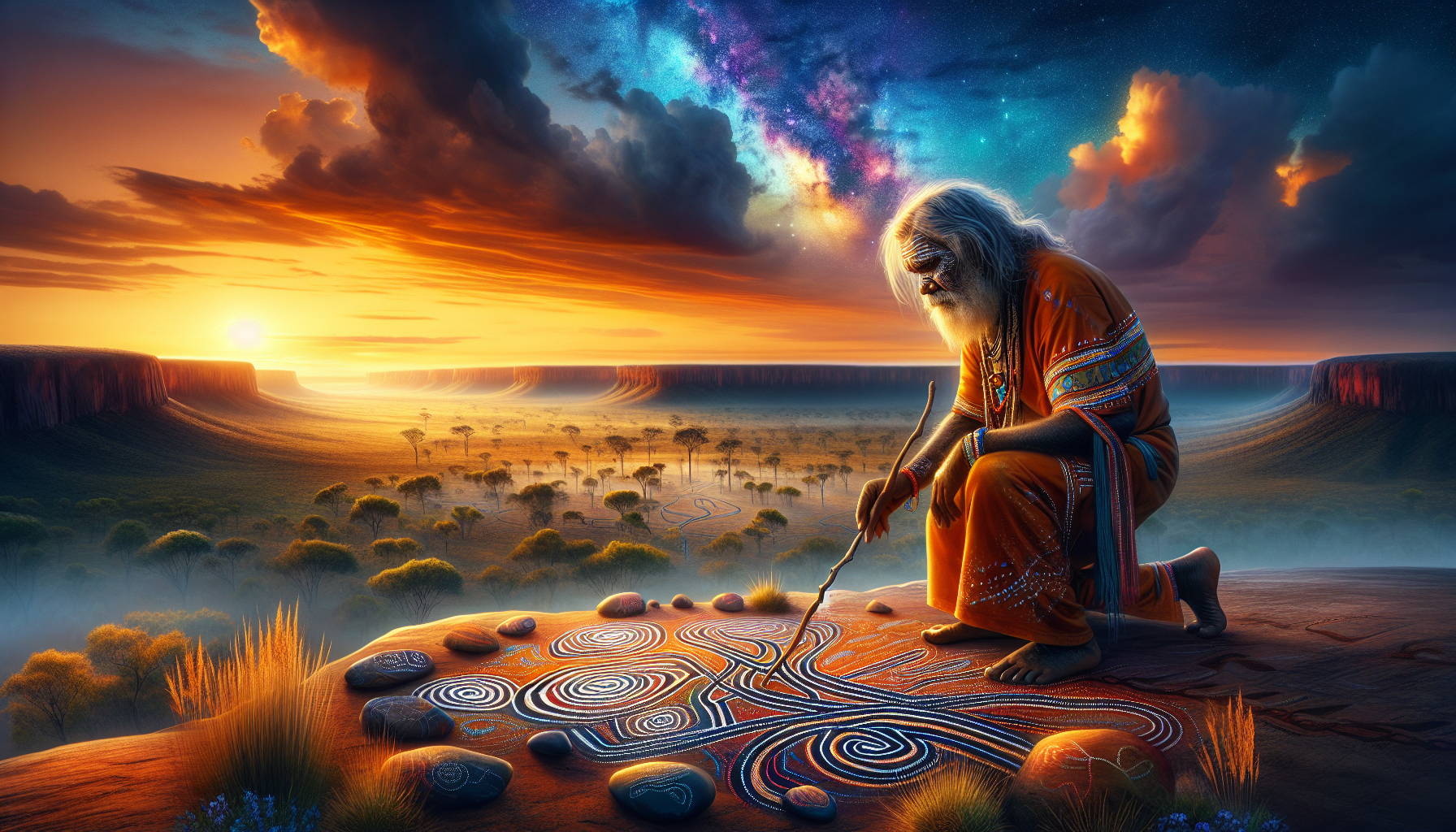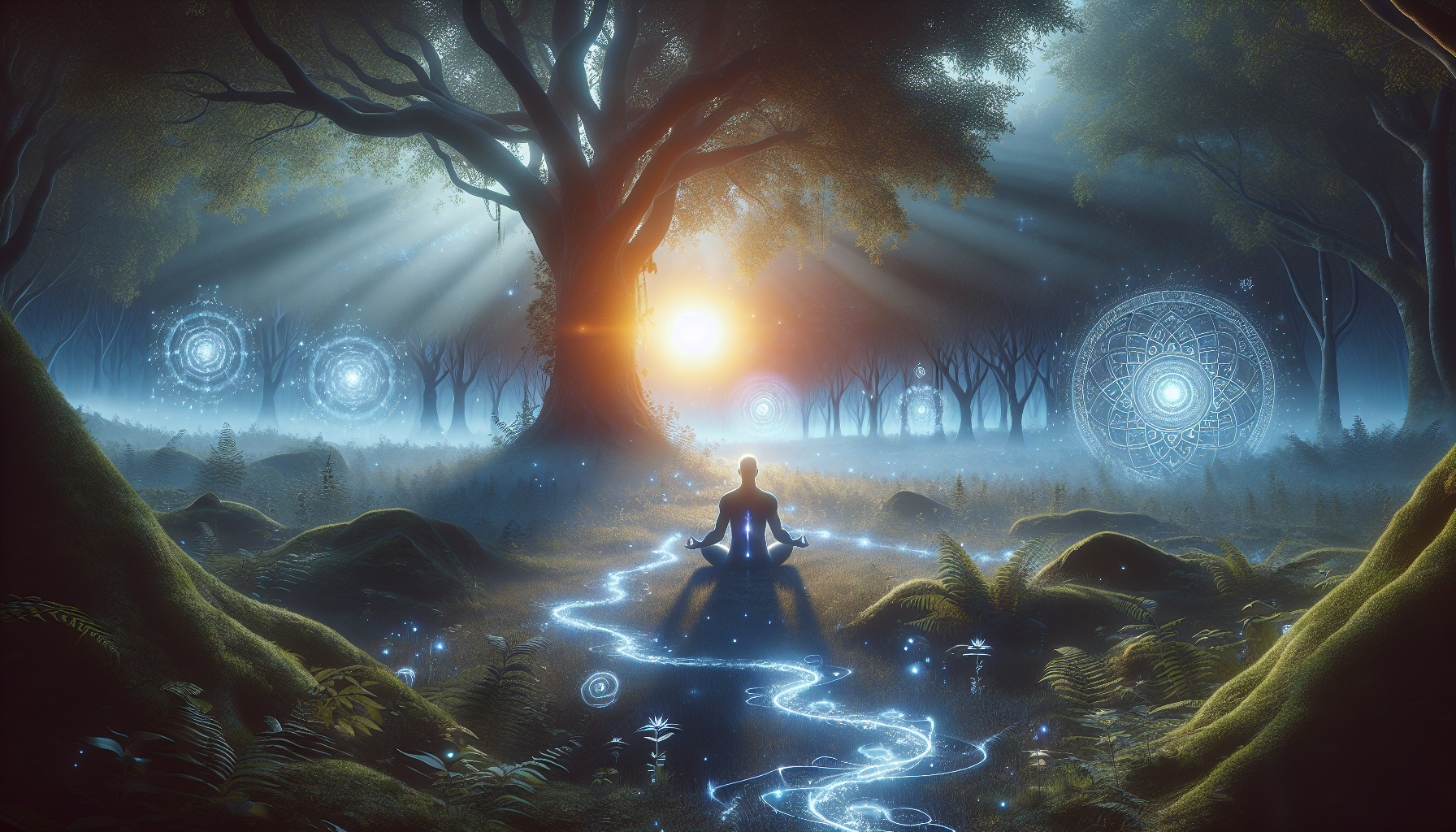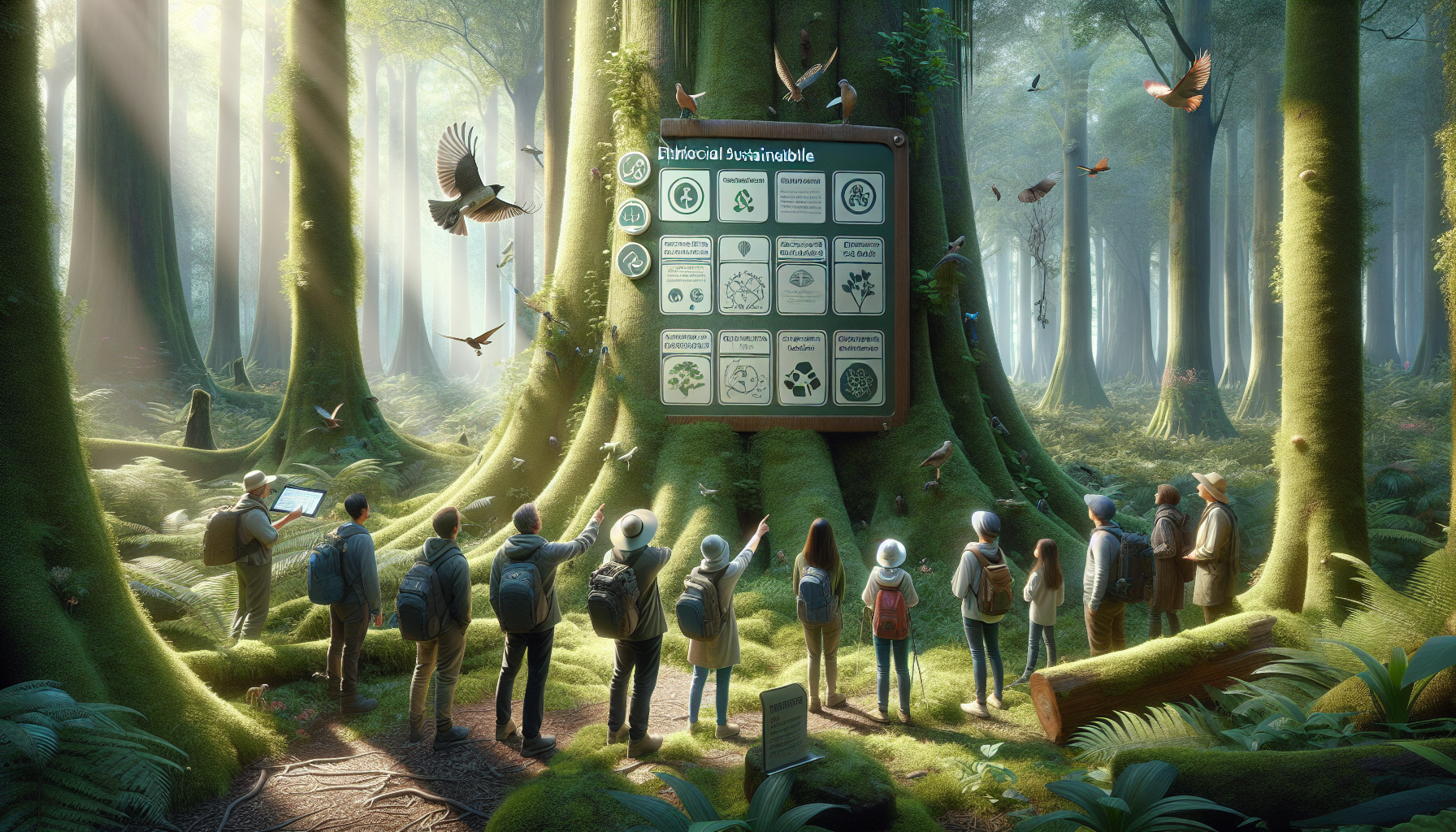In the heart of the vast Australian continent lies an enigmatic tapestry woven with ancient wisdom and timeless stories—the Dreaming Tracks of Aboriginal Australia. These pathways are not merely physical trails etched into the landscape but are profound spiritual routes that map the beliefs, history, and culture of the Aboriginal peoples. For thousands of years, these tracks have served as the arteries of an intricate belief system, guiding the Indigenous communities in their understanding of the world around them and their place within it. As we embark on this journey to uncover the mystical pathways of the Dreaming Tracks, we will delve into a world that is as fascinating as it is profound, inviting us to explore a unique spiritual perspective that remains vibrantly alive today. 🌏
The Dreaming, also known as the Dreamtime, is the cornerstone of Aboriginal cosmology. It is a complex network of narratives and beliefs that explain the origins of the land, its features, and its inhabitants. Through stories passed down over millennia, these tracks encapsulate the essence of creation, the deeds of ancestral beings, and the laws that govern human behavior and relationships with the natural world. As we explore these narratives, we will uncover how the Dreaming Tracks serve as both a map and a moral compass, guiding the Indigenous peoples in their daily lives and in their deep connection with the land. Each track is a thread in a rich tapestry that ties the past to the present, offering profound insights into the values and traditions that continue to shape Aboriginal identity.
In this exploration, we will also examine the interplay between these ancient traditions and the modern world. How have the Dreaming Tracks withstood the test of time, and what challenges do they face today? As the pressures of globalization and modernization encroach upon traditional ways of life, the resilience of these cultural pathways is both remarkable and instructive. Through interviews with Aboriginal elders and insights from cultural anthropologists, we will gain a deeper understanding of the efforts being made to preserve and revitalize these sacred traditions. Moreover, we will explore how the Dreaming Tracks are being interpreted and appreciated by a broader audience, transcending cultural boundaries and offering universal lessons in harmony, sustainability, and respect for nature. 🌿
Understanding the Dreaming Tracks: A Sacred Aboriginal Tradition
The Dreaming Tracks, or Songlines as they are often called, form a fundamental aspect of Aboriginal culture and spirituality in Australia. These pathways are not just physical trails across the land but are deeply embedded with spiritual significance and cultural history. They represent the journeys of ancestral beings as they created the world during the Dreamtime, a period of creation that holds profound importance in Aboriginal cosmology. Each track is a narrative, a song, a story that recounts the actions, challenges, and triumphs of these ancestors. This oral tradition is passed down through generations, preserving the cultural heritage and the intrinsic connection between the people and the land.
Songlines serve as a navigational tool, guiding travelers across vast landscapes by using the natural features of the land as landmarks. Each song or story corresponds to a particular stretch of terrain, providing instructions on where to go, what to observe, and how to survive. This unique form of navigation transcends the physical realm, as it also encompasses moral and ethical lessons taught through the stories of the ancestors. The Dreaming Tracks are a testament to the deep understanding and symbiotic relationship Aboriginal people have with their environment, showcasing their ecological knowledge and respect for nature.
The cultural significance of Dreaming Tracks extends beyond navigation. They are a living library of Aboriginal law, history, and spirituality. The songs and stories are intertwined with lessons on social conduct, environmental stewardship, and community values. These traditions reinforce the identity and belonging of Aboriginal people, connecting them to their ancestral roots and reinforcing their roles within their communities. In contemporary times, understanding and respecting these traditions is crucial for fostering cultural appreciation and supporting the rights and recognition of Aboriginal people.
The Spiritual and Cultural Dimensions of Songlines
Songlines are deeply spiritual, embodying the beliefs and values of Aboriginal communities. The Dreamtime, or Tjukurrpa, is a foundational aspect of Aboriginal spirituality, representing the time of creation when the world was formed, and life was instilled by ancestral beings. Each Dreaming Track is a reflection of this sacred time, offering insights into the spiritual world and the interconnectedness of all living things. The stories told through these pathways emphasize the unity between humans, animals, and the environment, promoting a holistic worldview that sees all elements of nature as interconnected and interdependent.
The cultural dimensions of Songlines are equally profound. They are a means of preserving and transmitting cultural knowledge across generations. Through these stories, Aboriginal people maintain their history, social structures, and cultural practices. The oral tradition associated with Dreaming Tracks ensures that this knowledge remains dynamic and adaptable, allowing each generation to interpret and apply the lessons in the context of their own lives. This adaptability is a strength, enabling Aboriginal culture to endure and thrive despite external challenges and changes over time.
For non-Aboriginal people, engaging with the concept of Dreaming Tracks requires sensitivity and respect. It involves acknowledging the sacredness of these pathways and the cultural significance they hold for Aboriginal communities. By learning about and appreciating Songlines, we can contribute to the preservation of Aboriginal culture and support efforts to protect these ancient traditions. This understanding also fosters reconciliation and mutual respect, paving the way for a more inclusive and harmonious society.
Modern Interpretations and Challenges Facing Songlines
In contemporary Australia, the preservation of Songlines faces numerous challenges. Urban development, mining activities, and climate change pose threats to the physical and cultural integrity of these ancient pathways. The encroachment of modern infrastructure can disrupt the continuity of Dreaming Tracks, severing the connections between significant sites and hindering the transmission of cultural knowledge. Additionally, the impacts of climate change, such as altered landscapes and extreme weather events, can further complicate efforts to maintain and protect these cultural treasures.
Despite these challenges, there are ongoing efforts to safeguard and revitalize Songlines. Aboriginal communities, along with cultural and environmental organizations, are actively working to document and preserve these pathways. Initiatives include mapping projects, oral history recordings, and educational programs that aim to raise awareness and appreciation for the cultural significance of Songlines. Collaborative efforts between Aboriginal and non-Aboriginal people are essential in these endeavors, promoting shared understanding and respect for this vital aspect of Australia’s cultural heritage.
Technology also plays a role in the modern interpretation of Songlines. Digital platforms and multimedia tools offer innovative ways to document and share these stories with a broader audience. By leveraging technology, we can ensure that the knowledge and traditions embedded in Dreaming Tracks are accessible and appreciated by future generations. However, it is crucial to approach these technological solutions with cultural sensitivity and to prioritize the voices and perspectives of Aboriginal people in the process.
Comparative Analysis of Dreaming Tracks and Other Indigenous Traditions
The concept of Songlines is not unique to Aboriginal Australians; similar traditions exist among Indigenous cultures worldwide. For instance, Native American tribes in North America also possess intricate oral histories and spiritual narratives tied to the land. These traditions often share common themes of creation stories, ancestral journeys, and the interconnectedness of nature. By examining these similarities, we can gain a deeper appreciation for the universal human experience of storytelling and the significance of oral traditions in shaping cultural identities.
Despite the shared elements, each Indigenous tradition possesses unique characteristics and interpretations. For example, while Songlines in Australia are closely linked to the physical landscape and navigation, other cultures may emphasize different aspects, such as social structures or cosmological beliefs. Understanding these nuances is essential for appreciating the diversity and richness of Indigenous cultures and for fostering cross-cultural dialogue and learning.
In the table below, we provide a comparative analysis of Dreaming Tracks and similar Indigenous traditions from around the world:
| Aspect | Dreaming Tracks (Australia) | Native American Oral Traditions (North America) |
|---|---|---|
| Focus | Navigation, creation stories, spiritual connections | Creation stories, social structures, moral lessons |
| Method | Songs, stories, oral tradition | Stories, dances, rituals |
| Significance | Preservation of culture, connection to land | Preservation of culture, community values |
| Threats | Urban development, climate change | Modernization, loss of language |
Engage with the rich cultural tapestry of Dreaming Tracks by watching the video below, which provides visual insights into the significance of these pathways: Understanding Songlines – Aboriginal Culture (YouTube Channel: Australian Geographic)
Preserving and Honoring Dreaming Tracks for Future Generations
Preserving Dreaming Tracks is a collective responsibility that requires the collaboration of Aboriginal communities, government bodies, and society at large. Effective preservation strategies must prioritize the leadership and knowledge of Aboriginal people, ensuring that their voices and perspectives guide the process. This includes recognizing land rights and cultural heritage, implementing legal protections, and fostering an environment of mutual respect and understanding.
Community-driven initiatives play a crucial role in preserving and revitalizing Dreaming Tracks. Aboriginal-led projects that document, map, and share these pathways are essential for ensuring their continuity. Educational programs that teach both Aboriginal and non-Aboriginal people about the cultural significance of Songlines contribute to a broader awareness and appreciation of these traditions. By engaging with these efforts, individuals can actively participate in the preservation and celebration of Aboriginal culture.
Moreover, supporting policies and practices that address the environmental and social challenges facing Songlines is essential. This includes advocating for sustainable land management practices, protecting significant sites from development, and promoting cultural sensitivity in tourism and educational endeavors. By addressing these challenges, we can create a future where Dreaming Tracks continue to thrive, offering guidance, wisdom, and inspiration to generations to come.

Conclusion
Conclusion: Unveiling the Mystical Pathways: Exploring Dreaming Tracks of Aboriginal Australia
As we draw to a close on our exploration of the Dreaming Tracks of Aboriginal Australia, it’s essential to reflect on the profound insights we’ve encountered throughout this journey. The Dreaming Tracks, or Songlines, are much more than just paths through the physical landscape; they are intricate tapestries of spiritual, cultural, and historical narratives that have shaped the identity of Aboriginal peoples for millennia. By traversing these pathways, we have delved into the depths of a culture that holds rich traditions, deep spiritual connections, and timeless wisdom.
Throughout our exploration, we first uncovered the fundamental concept of the Dreaming, or ‘Dreamtime’, which serves as the cornerstone of Aboriginal cosmology. This spiritual framework provides the foundation for understanding the world, guiding social norms, and preserving ancestral knowledge. The Dreaming is a living philosophy, one that continues to guide Aboriginal communities in their interactions with the natural world and each other. It teaches us about the interconnectedness of all life forms and the importance of maintaining balance within this intricate web.
We also examined the role of the Dreaming Tracks as physical manifestations of these spiritual beliefs. These tracks are not merely geographical routes; they are sacred pathways imbued with stories, songs, and ceremonies that serve to maintain the cultural fabric of Aboriginal societies. Each Dreaming Track is a narrative thread that binds individuals to their ancestors, their land, and their spiritual identities. By following these tracks, Aboriginal people engage in a form of spiritual pilgrimage, reaffirming their connection to their heritage and passing on invaluable knowledge to future generations.
Moreover, our journey highlighted the challenges faced by Aboriginal communities in preserving these sacred traditions amidst the pressures of modernity. Globalization, urbanization, and environmental degradation pose significant threats to the continuity of these ancient practices. Yet, despite these challenges, there is a resilient spirit within Aboriginal communities, a determination to protect and revitalize their cultural heritage. By supporting these efforts, we contribute to a broader understanding and appreciation of Indigenous knowledge systems, enriching our global cultural tapestry.
The significance of Dreaming Tracks extends beyond their cultural and spiritual dimensions; they also offer critical insights into sustainable living and environmental stewardship. Aboriginal peoples have long understood the importance of living in harmony with the natural world, a lesson that is increasingly relevant in our contemporary quest for sustainability. The Dreaming Tracks teach us to listen to the land, to respect its rhythms, and to recognize our role as custodians of its resources. By embracing these principles, we can forge a more sustainable future, one that honors the wisdom of the past while addressing the challenges of the present.
As we conclude our exploration of the Dreaming Tracks, let us be inspired by the resilience, wisdom, and spirituality of Aboriginal Australia. These pathways offer a roadmap for living with greater awareness, respect, and harmony with our world. They remind us of the enduring power of stories to shape our identities, connect us to our roots, and guide us toward a more inclusive and compassionate future.
We encourage you, dear reader, to carry forward the insights gained from this exploration. Share this knowledge with others, engage in conversations that foster greater understanding and appreciation of Indigenous cultures, and consider how the principles embodied in the Dreaming Tracks can be integrated into your own life. By doing so, you become a part of a global movement that seeks to honor and preserve the rich diversity of our world’s cultural heritage.
If you are intrigued and wish to delve deeper into the world of Dreaming Tracks and Aboriginal culture, here are some resources to guide your journey:
1. Australian Institute of Aboriginal and Torres Strait Islander Studies: AIATSIS – Explore a wealth of resources and research on Aboriginal and Torres Strait Islander cultures.
2. National Museum of Australia: Songlines – Discover an exhibition that brings the Dreaming Tracks to life through art and storytelling.
3. ABC Indigenous: ABC Indigenous – Stay informed with news, stories, and insights from Indigenous Australia.
Your engagement matters. Share your thoughts in the comments, spread the word by sharing this article, and consider how you can incorporate the wisdom of the Dreaming Tracks into your own life. Together, we can ensure that these sacred pathways continue to inspire and enlighten generations to come. 🌏✨
Toni Santos is a visual storyteller and symbolic naturalist whose creations explore the hidden ecologies and forgotten bonds between humans and nature, as whispered through ancient lore. Through an intuitive and myth-sensitive lens, Toni reveals the sacred choreography between flora, fauna, and human spirit — a world where trees once spoke, rivers remembered, and every herb carried a secret name.
His journey is rooted in the esoteric — in the rituals of forest-dwellers, the botanical codes of shamans, and the unspoken pacts that shaped how ancient peoples lived in deep, reciprocal harmony with the natural world. From sacred groves to serpent-guarded springs, each of Toni’s works reflects a symbolic relationship long obscured by modern forgetfulness.
With a background in visual design and ancestral aesthetics, Toni merges storytelling with sacred ecology. His pieces don’t simply illustrate — they channel. Drawing from myth, mysticism, and lost herbal traditions, he crafts visuals that resonate with the old wisdom: that nature is not background, but kin.
As the creative spirit behind Vizovex, Toni shares collections, visual studies, and articles that illuminate the occulted connections between human life and the wild world. His work calls on us to remember — not just with the mind, but with the senses and the soul — the profound dialogues our ancestors once had with earth, plant, and animal.
His work is a tribute to:
The mythic language of trees, stones, and roots
Forgotten pacts between healers and the wilderness
The sacred knowledge carried in nature’s unseen patterns
Whether you’re a seeker of ancient plant-lore, a mystic attuned to seasonal cycles, or simply someone who hears the forest speak, Toni welcomes you to wander a space where symbolism, nature, and spirit entwine — one myth, one leaf, one vision at a time.




